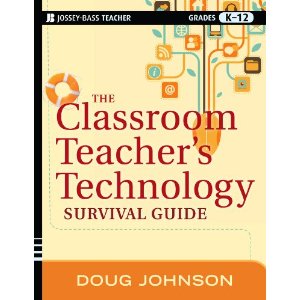Common sense from Collier and Magid
 Wednesday, November 10, 2010 at 06:44AM
Wednesday, November 10, 2010 at 06:44AM If you don't tell your children you love them
- they'll find someone online who will. - Moorhead MN police officer
I have appreciated and strongly recommended the work of Anne Collier and Larry Magid ever since reading their fine book My Space Unraveled: A Parents' Guide to Teen Social Networking back in 2006. I also read Anne's NetFamilyNews blog religiously.

Happily, Collier and Magid have just updated their parents' guide - and have made the new publication a free 32-page download. A Parents' Guide to Facebook should be required reading for every parent and educator.
One of the strengths of Collier and Magid's work has been discriminating between hyped dangers and real risks online. By disaggregating the numbers behind the headlines, adults can get a more accurate picture of who is in danger and what put them there. Here's a sample:
Youth-risk research has recently made five important findings:
- Young people who behave aggressively online are more than twice as likely to be victimized online, so children’s own behavior in Facebook or any social site is key to their well-being on the social Web.
- The most common risk young people face online is peer harassment or aggression – in other words hurtful, harassing, or defamatory behavior.
- A child’s psychosocial makeup and environment (for example, home and school) are better predictors of risk than any technology that the child uses, so...
- Not all children are equally at risk online, and the children who are most at risk online are those who are most at risk in “real life,” or offline
- Although, for the vast majority of youth, online social networking is largely a reflection of offline life, it can also amplify, perpetuate and widely distribute real-life problems or conflicts – very rapidly. Something posted in anger or on impulse is extremely difficult to take back, so it has never been more important for users (of any age) to think before they “speak,” post, or send a text message.
While scary predators get the headlines, it's cyberbullying and thoughtless postings that impact the widest number of students and which kids deal on a daily basis. This should tell us something about where to focus our training efforts.
I also appreciate the detailed, step-by-step instructions of setting up Facebook privacy settings that form a large part of this publication. Not only should we be working with our children/students in making good choices about who sees what, we ought to examine the settings on our own personal social networking sites too.
Thanks, Anne and Larry, for this important work.









Reader Comments (8)
According to the guide, students who are at-risk on Facebook are likely at-risk in real life. Students who are at-risk in real life are likely to have less parental involvement. Will a 32-page guide reach uninvolved parents?
I think this may be a good manual for people who's job responsibilities include teaching students and parents about social media.
It's funny, we just had some bullying training today at school, put on by our counselor. The issue of bullying via social media was a part of the training, and I proudly pointed out the fact that we just taught a lesson in the library about online images that included the fact that our kids' Facebook pictures could become part of a Google Image Search result if they did not set their privacy correctly. I had a great YouTube video on our library site for the first 2 months of school that showed viewers how to maximize their privacy settings; I plan to re-post it tomorrow.
I wonder though, if a print publication can keep up with changing menus and layouts of a site like Facebook. I suppose if the authors included a link to a well-maintained website that had the specific directions for changing privacy settings, parents and teachers could be kept abreast of changes in Facebook's menus and the like.
Doug, thanks for posting the link to this great resource. I sent it to my MS principal, who promptly forwarded it to all our parents on email. We especially loved the safety checklist--sometimes keeping things simple and sequential is the easiest! I love all the times I've found great resources through someone who recommended them!
This is such important information for everyone to be aware of. Great post!
Hi Dave,
No, for kids at risk because of difficult home lives, this manual not be directly helpful. But it can help those adults who have other custodial responsibilities for at-risk students like counselors, teachers, librarians, social workers etc - as you suggest.
Doug
Hi Len,
The authors clearly state that Facebook settings do change, so this is a moving target. A hybrid approach of both print and online information seems a reasonable approach.
Doug
Len,
Could you send me the link to that video? Gracebice@hotmail.com
Grace asked me for the YouTube video on maximizing Facebook Privacy settings:
http://www.youtube.com/watch?v=TGkUA84ftYU
Thanks!
Len
Thanks for the great post. Well worth passing on to others, as I have done.